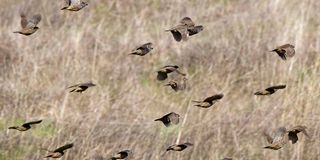Prime
Over five million weaver birds killed in Manyara

What you need to know:
- The operation, which is being carried out by the Tanzania Plant Health and Pesticides Authority (TPHPA), follows the invasion of the destructive birds on the paddy farms where more than 1,000 acres were under threat.
Manyara. More than five million weaver birds have been killed in Manyara Region in the ongoing exercise to clear the quelea species that have been invading paddy farms at Magugu in Babati District.
The operation, which is being carried out by the Tanzania Plant Health and Pesticides Authority (TPHPA), follows the invasion of the destructive birds on the paddy farms where more than 1,000 acres were under threat.
According to Mr Gladman Mbukoi, the TPHPA Pests and Outbreaks Control expert, the destructive birds were capable of destroying over 50 tonnes of food crops on farms per day and could clear entire farms within a very short period of time.
He said the exercise was difficult because huge swarms of the birds had blanketed the entire area, blitzing onto the paddy farms and feeding at the alarming speed.
Mr Mbukoi said the experts were forced to deploy aerial spraying of avicides that were dissolved in diesoline.
It took more than four days to spray the birds with the work taking place mostly during the night when weavers were asleep.
Local farmers, such as Ms Mariam Gadiel, a rice grower at Magugu, admitted that the birds’ invasion had already gone out of control because even the hundreds of watchmen that the farmers had been hiring to drive them away could not keep up with the large swarms of the birds.
The Babati District Agriculture Officer, Kanas Sulu said the birds were negatively impacting the farming sector in Manyara prompting local authorities to seek help from the TPHPA in Arusha.
“Farmers have been experiencing 100 percent loss of harvests,” the officer said. Acting manager of Tanzania Plant Health and Pesticides Authority in the Northern Zone Juma Mwinyimkuu said the birds’ invasions had been so apparent during the start of the dry season, especially in the months of September and October, 2023.
“But, we are well prepared to combat such invasions with modern technology such as large drones, environment friendly chemicals and manpower,” said Mr Mwinyimkuu.
For his part the TPHPA Acting Supervisory Manager in-charge of pests and outbreak control, Godlove Kirimbo said in undertaking such exercises, they normally cooperate with the UN Food and Agriculture Organization (FAO) and the World Food Program (WFP).
Quelea birds have been known for causing serious damage to crops in Africa when they migrate.
The weaver birds usually destroy small grains like rice and sorghum.
Queleas move in swarms because they also happen to be the most populous bird on earth with nearly 2.0 billion of them flying in the wild.
They are widely distributed in Tanzania and across Africa where they roost in large flocks estimated at 30 million birds.




